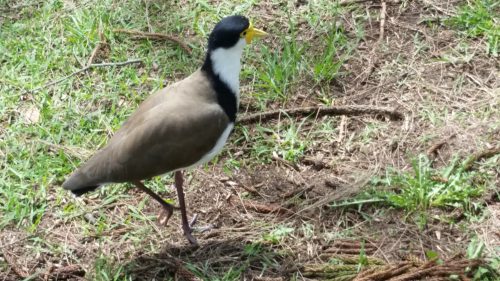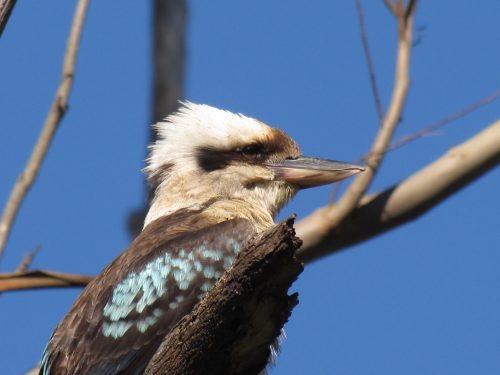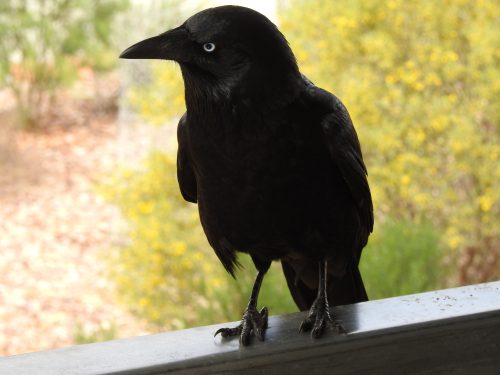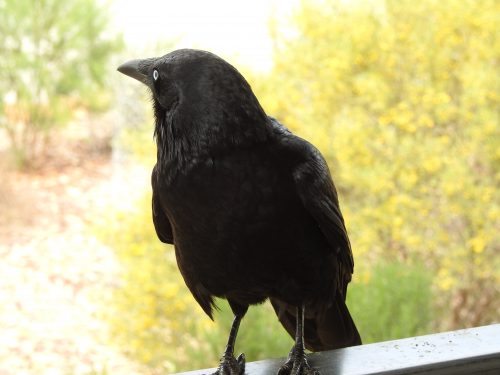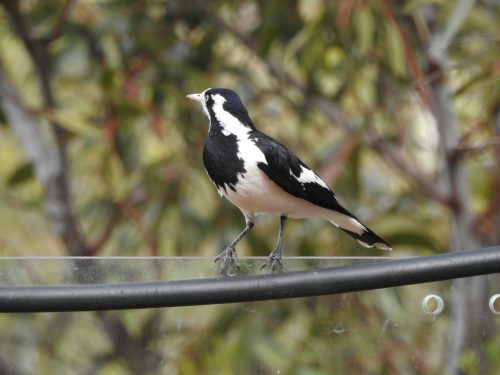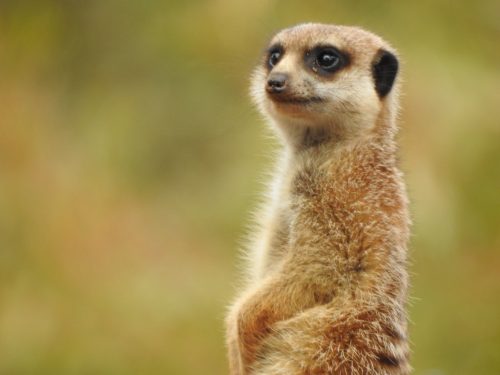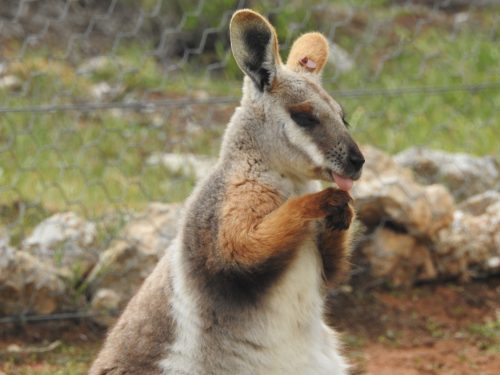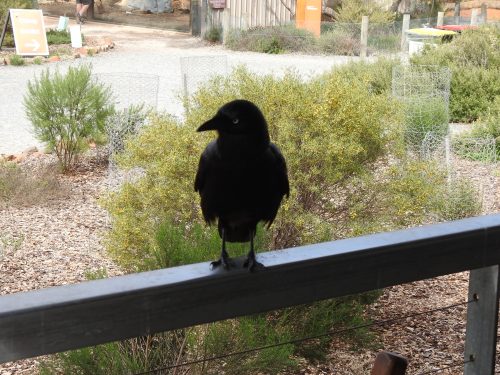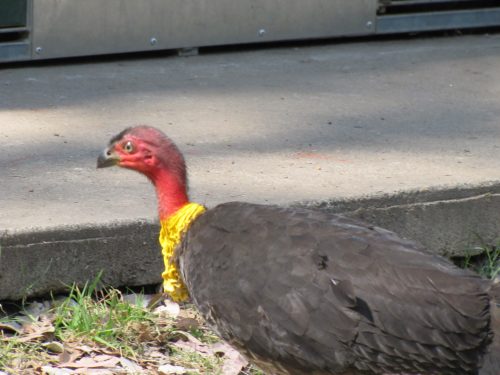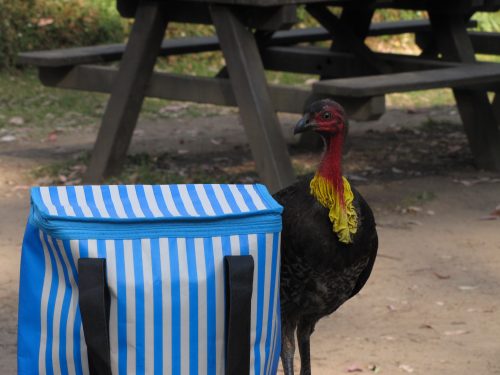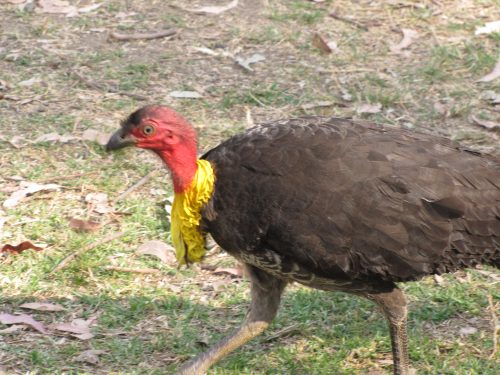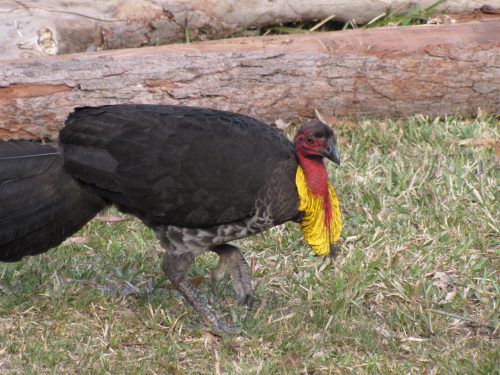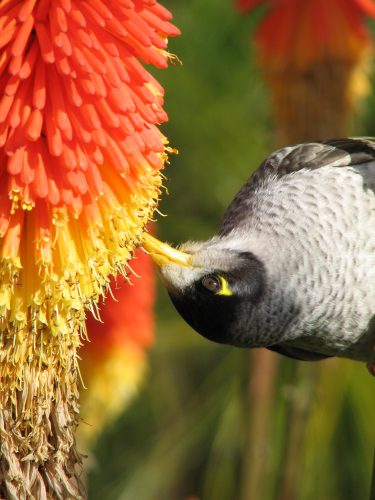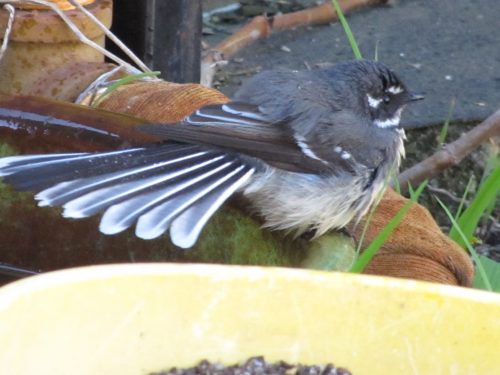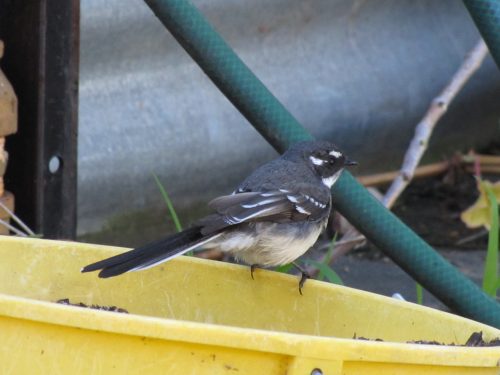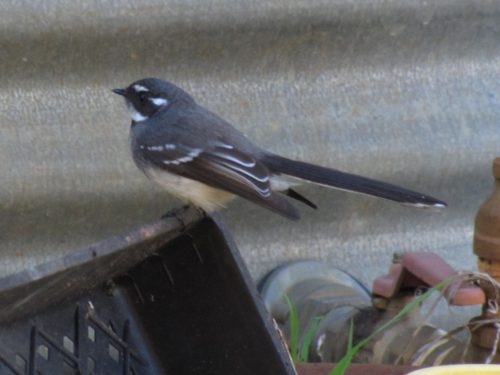A very cheeky lapwing
I recently went with my son and grandson to Little Athletics at the Rotary Athletics Field, Lane Cove, Sydney. On many occasions when I am in Sydney visiting my family, I have enjoyed seeing my grandson compete in the various events. He is quite talented and has even reached competing at the state level.
During the morning’s events, I made a note of all the bird species seen or heard. I have done this on most occasions on our visits to this athletics ground. On this occasion, all of the events had finished and the equipment was being packed away. My grandson and I bought some food for lunch from the barbecue which is provided every week and we were sitting on a nearby picnic ground adjacent the track. A Masked Lapwing flew in and landed only metres from where we sat. People were heading to their cars and it was quite unconcerned by their presence.
The bird actually came up to within a metre of where I was sitting. I am not sure if it wanted me to share some of my sausage or bun or was expecting some worms to fall out of my lunch. It hung around until I was finished eating and I managed to get my phone out of my pocket and take the photo above. No zoom needed – it was very close.
A little further off near the barbecue area, someone dropped a sausage on the footpath. It was only there for a few seconds until two Laughing Kookaburras swooped down from the nearby trees to grab the sausage. My grandson and I were amused by what happened next. The kookaburra picked up the sausage and proceeded to bang it on the ground, either to “kill” it or to break it up into smaller, more manageable chunks.
This incident reminds me of another occasion on a visit to the nearby Lane Cove National Park where we experienced some lunch snatching kookaburras.
A Cheeky Raven at Monarto Zoo
A few weeks ago my daughter suggested that we visit the Monarto Zoo. It had been about a year since my last visit which is rather poor of me because it is only a ten-minute drive from my home in Murray Bridge, South Australia. And I am a member so I can enter whenever I please at no cost. Monarto Zoo is a part of the Adelaide Zoo which I also must visit again soon.
Before we went on the guided bus tour of the open range zoo we decided to buy our lunch from the cafe in the Visitor Centre. We found a suitable table overlooking the garden and before we had even started eating, one of the local Little Ravens came to join us. Just like many species of birds, this Raven had learned that people are often associated with food. It certainly was not shy and landed on the railing right next to our table. I could have reached out and touched it. I am not normally in favour of feeding our native birds, but my daughter has no such reservations. Nor did the Raven – it gratefully took the food handed out and flew off to a nearby mallee tree to consume the handout. It returned several times, both to our table and to the tables of other zoo visitors.
During our lunch, we were also visited by several Magpie-larks, another common species in this area. While they came close to our table, they never ventured as close as the Raven. I managed a good photo of the female while it was perched on the glass fence of the nearby Meerkat enclosure.
Monarto Zoo has a wonderful collection of the adorable Meerkats on display. With their enclosures having glass surrounds, everyone can get excellent views of these wonderful creatures. I have included a photo below. I have also included a photo of the beautiful Yellow-footed Rock-wallaby which is native to the Flinders Ranges in the northern parts of South Australia.
Harassed by a turkey
Brushturkeys are not everyone’s favourite bird. In fact, many people regard them as pests. This is especially so when the turkeys scratch around in their gardens. I believe that they can make quite a mess of a garden when they are making a nest mound to incubate their eggs.
On our recent trip to Sydney to stay with family, my wife and I had several occasions where we spent time in the nearby Lane Cove National Park. It is a lovely park with plenty of picnic areas for visitors. As a bonus, the park is only a ten-minute drive from where we were staying.
On one visit to the national park, we were relaxing near the river. We had enjoyed a hectic few weeks with our grandchildren – ages 9 and 6 – and we were just looking for a quiet time of relaxation. One of the resident Brushturkeys, however, saw us as easy pickings. It wandered around our chairs looking for a handout or two. When this wasn’t forthcoming, it jumped on the picnic table and began to scrounge around our things on the table (see photo below).
It actually tried to unzip our cooler bag. It was obvious that it had done this before and knew exactly what to do. It was unsuccessful because I chased it off. A few minutes later, it returned, this time attempting to open our biscuit tin. This was a beautifully decorated tin my wife had bought recently at the fair run by the school our grandchildren attend. It began scratching at the lid of the tin, attempting to open it. I again chased it off before it could scratch the tin. It was also in danger of moving the tin off the table and the lid may have opened on impacting the ground.
Pests
As I said at the beginning, many people regard these birds as pests. I admit that they can be very troublesome. I have a different point of view. I really enjoy seeing these birds when we come to Sydney, for the following reasons:
- We don’t have the species in South Australia where I live. (There is an introduced population on Kangaroo Island off the SA coast.)
- The birds have character and attitude. In heaps – and sometimes this character spills over into being annoying.
- They are easy to photograph – they come up close to humans and are generally unafraid.
Good birding.
Trevor
Get away, Turkey
Over recent weeks we have been staying with family in Sydney. During our four week stay, we have observed Australian Brush Turkeys on many occasions. One actually walked past their house on the footpath in Artarmon. Whenever we have visited various parks and gardens around this area, we have seen one or more turkeys. It is something we do not get to see where we live in South Australia, so it is something of a treat and special to us.
Last weekend I was driving my family to Little Athletics. I don’t normally get to see my grandson compete, so it was a special occasion. Just as we were about to get to the athletics track, I had to slow down for a turkey in the middle of the street. It was casually walking across the road, oblivious to the traffic which was thankfully quite light – our car was the only one at that point.
As the turkey strolled across the street, I was amused to see three Noisy Miners harassing it all the way. They obviously did not want the turkey in their territory. Perhaps they were nesting and were being overprotective of their eggs or young. The turkey was no threat to either eggs or young, so I don’t know why they were so annoyed by the turkey’s presence. Perhaps they were just being annoying for the sake of it.
Whatever the reason, it made me laugh to see the turkey ducking and weaving to get away from the miners’ pecks on its back. I didn’t get a photo because I was driving, and my camera was not within easy reach, anyway. I have included a photo above of a turkey taken in the nearby Lane Cove National Park a few days earlier. On that occasion, the turkey in the photo was harassing us as it attempted to scrounge some food from our picnic table. I’ll write about that in another post soon. The photo of a Noisy Miner below was taken some time ago in the Adelaide Botanic Gardens.
Other birds
For the rest of the afternoon, I was more interested in watching my grandson competing than in the local birdlife. There were plenty more Noisy Miners and Rainbow Lorikeets, several Australian Black-backed Magpies, a few Australian Ravens, one Magpie Lark and several Laughing Kookaburras. Three Crested Pigeons tried several times to settle on the grass to feed, only to be disturbed by the children running around the track, or moving across the oval to their next event. There was no sign of the Channel-billed Cuckoo I observed at the same location a week earlier.
Readers:
I would love to read about any funny incidents you have seen involving birds, I would be very happy for you to leave comments.
Good birding,
Trevor
Grey Fantail comes up close
One of the birds I would love to have resident in our garden is the Grey Fantail. We live on the outskirts of the rural city of Murray Bridge, about 80 km south-east of Adelaide, South Australia. We live on a five-acre block of land with about half of it being mallee scrub. Near the house, we have planted many native Australian bushes and trees. These attract a wide variety of birds to our garden.
Common and widespread
The Grey Fantail is featured in today’s photos (above and below). This member of the flycatcher family of birds is common and widespread in the district where we live, but I can’t claim it as a resident species. It generally only comes to visit us in the cooler months of the year, usually from April through to September. I am not sure why this is so, but there is quite some evidence to show that this species is partly migratory in parts of Australia. Perhaps it just likes to come visit us for a while each winter – to cheer us up.
Single birds only
When it does visit us, it tends to be only one bird. We rarely have two fantails present at once, though I have seen two together at a favourite birding spot about 3 kilometres to the west. I have just checked my database, and I have only ever recorded one bird at a time on our property over the last 12 years. (My database does not yet go back further than that – it’s a work in progress.)
Other fantails
The Grey Fantail is a close relative of the Rufous Fantail and the much loved and very common Willie Wagtail. This latter species is a resident bird on our property, but the Rufous Fantail is a rare species in South Australia. This is a pity because it is one of my favourite birds and I have only seen one on a handful of occasions. Every time I visit my family in Sydney I live in hope of seeing one – and of getting a good set of photos. I still live in hope.
Photos
Despite it being common in many parts of Australia, I do not have many photos of the Grey Fantail. Its habit of constantly being on the move makes photography of this species a little more challenging than many species. The shots shown today were taken a few weeks ago while my wife and I were having lunch on our back veranda. The fantail came up quite close to where we sat, fluttering around and on the move all the time. I had to anticipate where it was going to perch long enough to press the shutter on my camera. While the composition is not great, and the background distracting (and quite awful), I am still pleased to have managed these photos.
Now I need to find an obliging Rufous Fantail to photograph.
Good birding,
Trevor
Further reading:
- Grey Fantail – from the Birds in Backyards website – plenty more information here.
- A brave Willie Wagtail
- A feisty Willie Wagtail
- Grey Fantail at last
